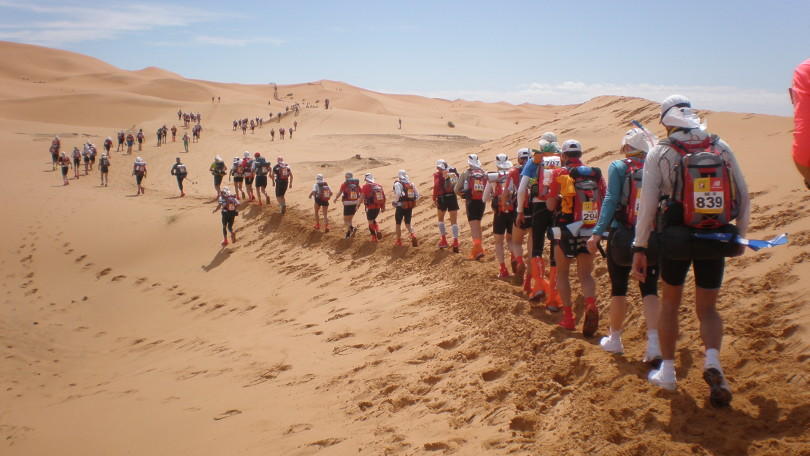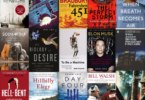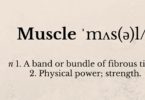What is best in life? It’s a question that’s been pondered by everyone from Conan The Barbarian to David Foster Wallace, and the only thing that they could (probably) agree on is that crushing your enemies and seeing them driven before you is better than going on a luxury cruise. What’s the most fun is slightly easier to answer: most people who are into training and adventuring (and are therefore worth listening to) agree that there are basically three types:
Type 1: Fun while you’re doing it. For me, this includes deadlifting, boozing, eating high quality meats, going on the Jurassic Park ride at Universal Studios, most Brazilian Jiu-Jitsu classes and playing with dogs. Simple.
Type 2: Only fun in retrospect. The sort of thing you hate and regret doing while you’re in the middle of it, but are glad you did ten minutes after it’s over. For me, this means any sort of do-X-for-time workout, actually competing in MMA fights, races that are longer than 40km, and that one time that I decided to go deep-water soloing despite having terrible food poisoning and then the boat broke down on the way back, so I spent an hour climbing up jagged rocks and leaping off cliffs and then two hours shivering in the rain, vomiting chunks of pineapple over the side. I look back on it now and I’m still glad I did it.
Type 3: Not fun, even once you’re looking back a week later. Situations where you’re genuinely in fear of your life or health, usually because you’ve done something stupid. People differ on this one, but I like to think that there comes a point – maybe months or years down the line – where you see these experiences as things that have helped shape you into a better/wiser person, even if, with the benefit of hindsight, you wouldn’t have done them in the first place.
So that’s it for the Fun Scale as traditionally recognised by everyone else. But, since I’m just about arrogant enough to think it’s a good idea, I’d like to add a fourth category:
Type 0: Things that are supposed to be fun but aren’t.
It’s easy to be tricked into thinking that things are going to be fun. That’s basically the entire point of advertising, and quite a big part of capitalism. It’s difficult to sell you things as horrible, but easier to sell things that seem like they ought to be nice. Going to terrible nightclubs, being ‘pampered’ (whatever that means), buying stuff you can’t realistically afford, and living life with no challenge or moments of abject terror all fit this category (for me, anyway). But what does this mean for you?
Here’s my suggestion: it means you should actively chase Type 2 fun, embrace Type 1 when it happens, and ignore Type 0 entirely.
Here’s David Foster Wallace, talking about going on a $5,000 luxury cruise (and reading the cruise brochure while he’s on board):
…the promise to sate the part of me that always and only WANTS is the central fantasy the brochure is selling. The thing to notice is that the real fantasy here isn’t that this promise will be kept, but that such a promise is keepable at all. This is a big one, this lie. And of course I want to believe it— fuck the Buddha— I want to believe that maybe this Ultimate Fantasy Vacation will be enough pampering, that this time the luxury and pleasure will be so completely and faultlessly administered that my Infantile part will be sated. But the Infantile part of me is insatiable— in fact its whole essence or dasein or whatever lies in its a priori insatiability .
In response to any environment of extraordinary gratification and pampering, the Insatiable Infant part of me will simply adjust its desires upward until it once again levels out at its homeostasis of terrible dissatisfaction…instead of feeling refreshed and renewed I’m anticipating just how totally stressful and demanding and unpleasurable regular landlocked adult life is going to be now that even just the premature removal of a towel by a sepulchral crewman seems like an assault on my basic rights, and plus now the sluggishness of the Aft elevator is an outrage, and the absence of 22.5-lb dumbbells in the Olympic Health Club’s dumbbell rack is a personal affront.
Brain-science has a name for this: it’s called the Hedonic Treadmill, and by now it’s pretty well-established that humans to quickly return to a relatively stable level of happiness despite major positive or negative events or life changes. It is, in other words, why you will never really get any happier via pampering. How do you get off it? Well, you’ve probably read by now that money only buys you happiness up to a point – ie, the point where you can stop worrying about not having enough money all the time. Similarly, spending money on stuff isn’t as good as spending money on experiences, but you probably already knew that.
The interesting bit is why this happens: Cornell University Psychology Professor Dr Thomas Gilovich suggests that, unlike objects, experiences become part of our physical identity and connect us to other people: you’re more likely to bond with someone over having done a Tough Mudder than owning the same smartwatch, for instance. Similarly, you’re much less prone to negatively compare your own experiences to someone else’s than you would with material purchases – you can feature-compare a new laptop much more easily than a month of Muay Thai lessons. Even more interesting: if people have an experience they say negatively impacted their happiness, once they have the chance to talk about it, their assessment of that experience goes up. Gilovich attributes this to the fact that things that were stressful or scary in the past can become a funny story to tell at a party or be looked back on as a character-building experience.
Think about all this for a second, and it all adds up to a strong argument for chasing Type 2 Fun. Consider: it’s a lot easier to bond with people over unpleasant, painful experiences than good ones, and an ultra-endurance race is a lot more character-building than a fun run. Even the feature-comparison thing holds up: whether you’re comparing smartphones, Glastonbury experiences or Marathon Des Sables horror stories, there’s always going to be some asshole who tries to one-up you – but at least if he’s spent six days trudging through blisteringly-hot desert he might have some decent stories about it.
So here’s the take-home lesson. If sipping margaritas on a beach, having your pores cleansed or going to those awful nightclubs where the villains from every 1990s film hang out is all you want in life, great. Do that. If, on the other hand, it’s not quite working for you somehow, science has the answer: you can’t outrun the hedonic treadmill, Type 1 Fun isn’t all it’s cracked up to be, and Type 0 isn’t even worth spending money or time on. Do something terrifying, write something intimidating, fight somebody tougher than you, work out until you feel vaguely sick, and have an adventure. You’ll feel better afterwards, and for years to come.








Wonderful piece – I totally agree with this entirely.
There’s quite a few types of fun and I agree that type 2 fun is the most rewarding.
Things that really test you while you’re doing them, that make you question “why!” but, ultimately, are really great for you, your body and your mind. That’s what’s fun.
Great post. I had always thought of fun in these three categories instead: Challenging, Accomodating and Relaxing (https://gretchenrubin.com/happiness_project/2013/04/consider-the-three-levels-of-fun-challenging-accommodating-and-relaxing-fun/)
I enjoyed trying to relate yours and Ms. Rubin’s: Type 1 is like Relaxing (but may also encompass Accomodating; I think Accomodating is an interesting category that can also fit into your Type 2). Type 2 is definitely like Challenging. Type 3 is by design unintentional. Type 0 is probably part of Relaxing – or at least meant to be!